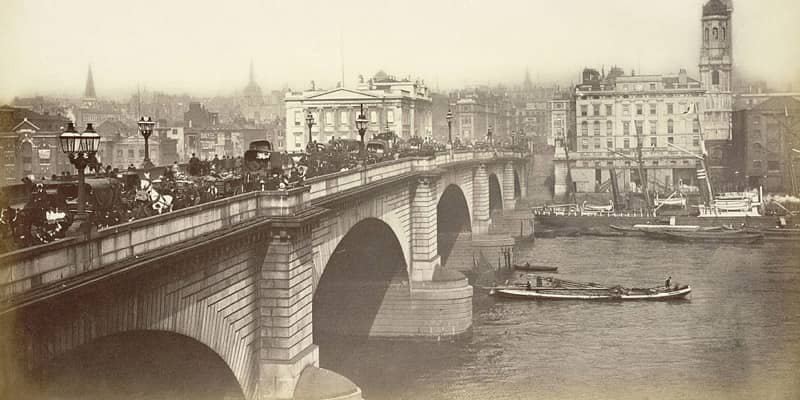Many children all over the globe are familiar with the catchy nursery rhyme “London Bridge is Falling Down”. However, most of them don’t know the origin and the history behind the famous rhyme. Is it fiction or it’s just a recollection of a tragic historical event? We’re about to find out.
The Wooden Bridge
The ‘London Bridge is falling down is based on the one of the most famous monuments in London. It’s history can be traced to the Roman occupation of England in the first century. The first London Bridge was made of wood and clay and was fortified or re-built with the various materials mentioned in the children’s nursery rhyme. Many disasters struck the bridges . Viking invaders destroyed the bridge in the 1000’s which led to a fortified design, complete with a drawbridge. Building materials changed due to the many fires that broke out on the bridge.
The Stone Bridge
The first stone bridge was designed by Peter de Colechurch and built in 1176 and took 33 years to build and featured twenty arches the dimensions of which were sixty feet high and thirty feet wide and was complete with tower and gates. The flow of the Thames under the bridge was used to turn water wheels below the arches for grinding grain. By the 1300’s the bridge contained 140 shops, some of which were more than three stories high. (The reference to Silver and Gold in the rhyme relates to the trading which was conducted on the bridge).
London Bridge survived the Great Fire of London in 1666 but its arches and foundations were weakened. (Buildings with thatched roofs were banned in London following the Great Fire of 1666 and this ban was only lifted with the construction of the New Globe Theater in 1994 – the following website is highly recommended for further details of the Globe william-shakespeare.info
The Modern Re-builds!
In the 1820s a new London Bridge was built on another site, north of the old one. This new bridge opened in 1831 and the old bridge was demolished. In the 1960s yet another London Bridge was built.
The London Bridge of 1831 was transported, stone by stone, to Lake Havasu in Arizona, US.

